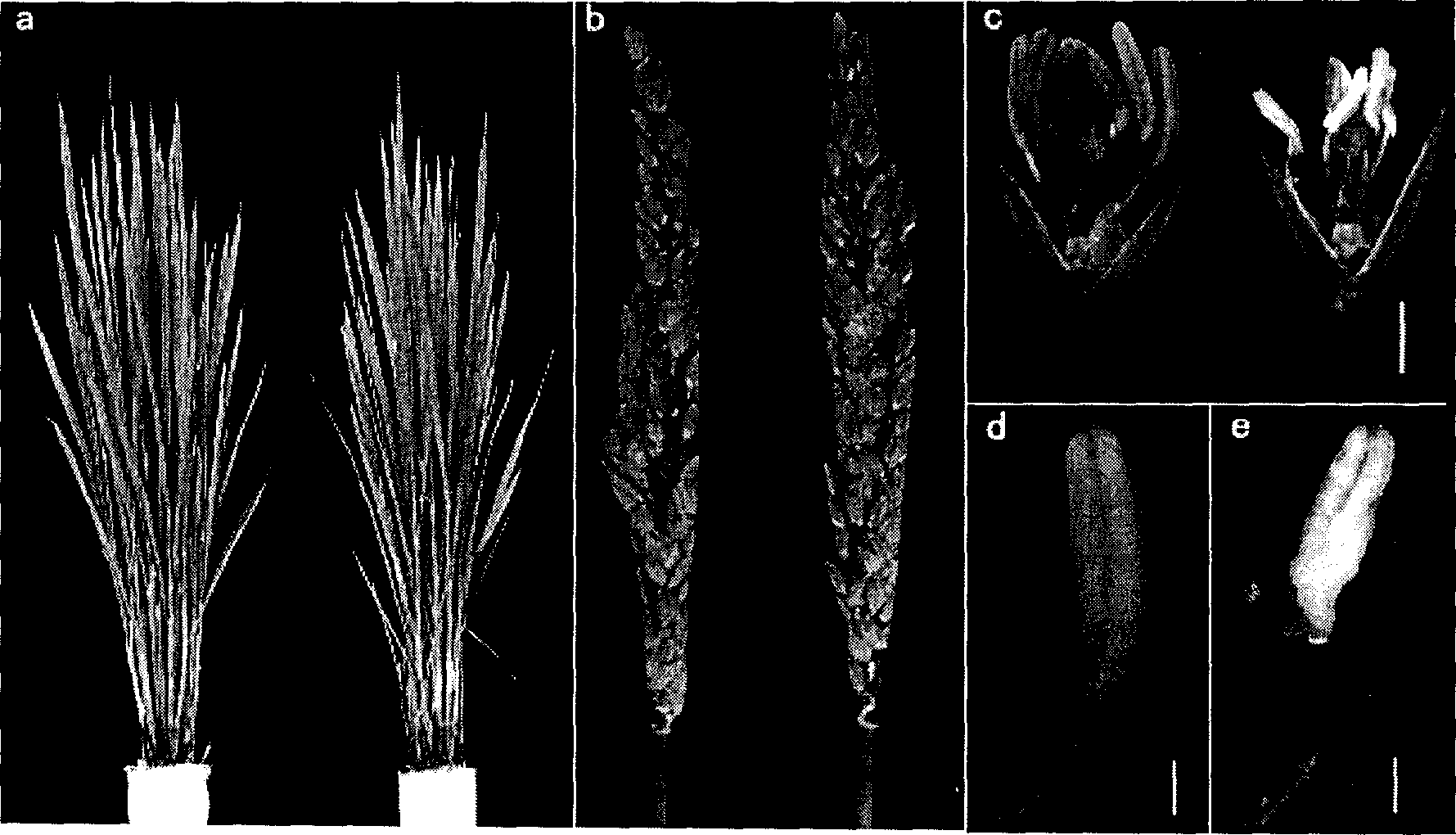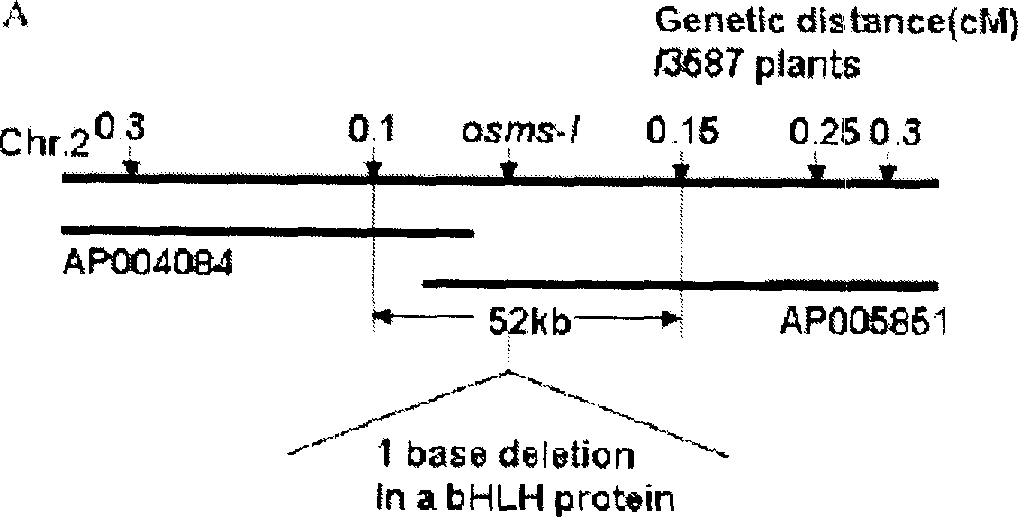Protein coding sequence for controlling rice tapetum degradation
A technology for degrading proteins and coding sequences, applied in plant peptides, biochemical equipment and methods, applications, etc., can solve the problem of no description and report of OsTDR gene found
- Summary
- Abstract
- Description
- Claims
- Application Information
AI Technical Summary
Problems solved by technology
Method used
Image
Examples
Embodiment 1
[0040] Embodiment 1: Obtaining and morphological observation of Ostdr mutant plants
[0041] This mutant was used in our laboratory 60 The japonica rice 9522 seeds were mutated with Co ray, and the treatment dose was 280Gy. A male sterile mutant in the F2 generation was backcrossed for three generations, and a stable genetic mutant Ostdr controlled by a recessive single gene was obtained. All plant materials were planted at the experimental base of Shanghai Academy of Agricultural Sciences. The Ostdr mutant was backcrossed with japonica rice 9522, all the F1 generations were fertile, and segregation occurred in the self-crossed F2 generation, of which 189 were normal plants and 55 were mutant plants, and the ratio of normal plants to mutant plants was close to 3:1 (χ 2 =0.79χ 0.05 3.84), indicating that the phenotype of the male sterile mutant was caused by a single nuclear gene mutation.
[0042] Morphological observation of Ostdr mutant plants. Such as figure 1 , The p...
Embodiment 2
[0043] Embodiment 2: Location and cloning of OsTDR gene
[0044] (1) Positioning groups. Ostdr was crossed with the indica rice line Longtefu B, the F2 generation was obtained by selfing, and the male sterile plants were selected as the positioning population.
[0045] (2) Rice DNA extraction. Using the improved CTAB method. The simple steps are as follows: Take 0.1-0.2 grams (about half a piece) of leaves and put them in a small mortar, add an appropriate amount of liquid nitrogen, grind them to powder immediately, put them into a 2ml centrifuge tube, add 700ul of 1.5xCTAB solution preheated at 100°C to centrifuge After 20 minutes, take out the centrifuge tube, add an equal volume of chloroform / isoamyl alcohol, mix vigorously, centrifuge (13000rpm) for 10 minutes, take the supernatant into a new tube, add 900ul After mixing with absolute ethanol, put it at -20°C for more than half an hour. The precipitated DNA was centrifuged at 14000 rpm (10 minutes). The supernatant wa...
Embodiment 3
[0051] Example 3: Functional analysis of OsTDR gene
[0052] The sequence analysis of the cloned OsTDR gene was carried out on the Internet. The function of the AMS gene in Arabidopsis thaliana, which has a high amino acid sequence homology with the OsTDR gene, has just been reported, and it controls the development of the pollen tapetum. This is similar to the phenotype of the Ostdr mutant, implying that the OsTDR gene also has a similar function ( Figure 4 ). In order to further confirm that the cloned OsTDR gene is the gene that causes the phenotype of the Ostdr mutant, the present invention cuts the BAC clone AP005851 (comprising 2391bp of ORF, 2430bp upstream region and 1857bp downstream region) with BamHI and SalI to construct a 6.6kb The pCAMBIA1301 plasmid was transformed into Agrobacterium tumefaciens EHA105, and transformed into the Ostdr mutant using genetic means to observe whether it would cause the plants to restore wild-type traits. Figure 5 Slices of mature...
PUM
 Login to View More
Login to View More Abstract
Description
Claims
Application Information
 Login to View More
Login to View More - R&D
- Intellectual Property
- Life Sciences
- Materials
- Tech Scout
- Unparalleled Data Quality
- Higher Quality Content
- 60% Fewer Hallucinations
Browse by: Latest US Patents, China's latest patents, Technical Efficacy Thesaurus, Application Domain, Technology Topic, Popular Technical Reports.
© 2025 PatSnap. All rights reserved.Legal|Privacy policy|Modern Slavery Act Transparency Statement|Sitemap|About US| Contact US: help@patsnap.com



